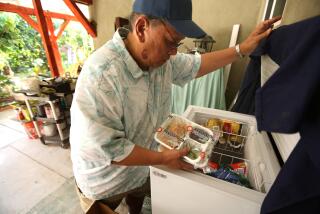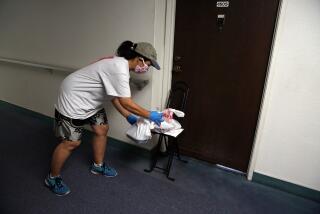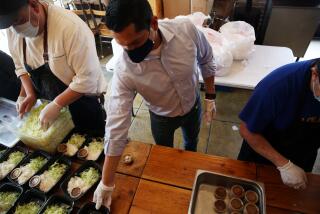New Yorkers come together to feed the 1 in 4 residents without enough to eat
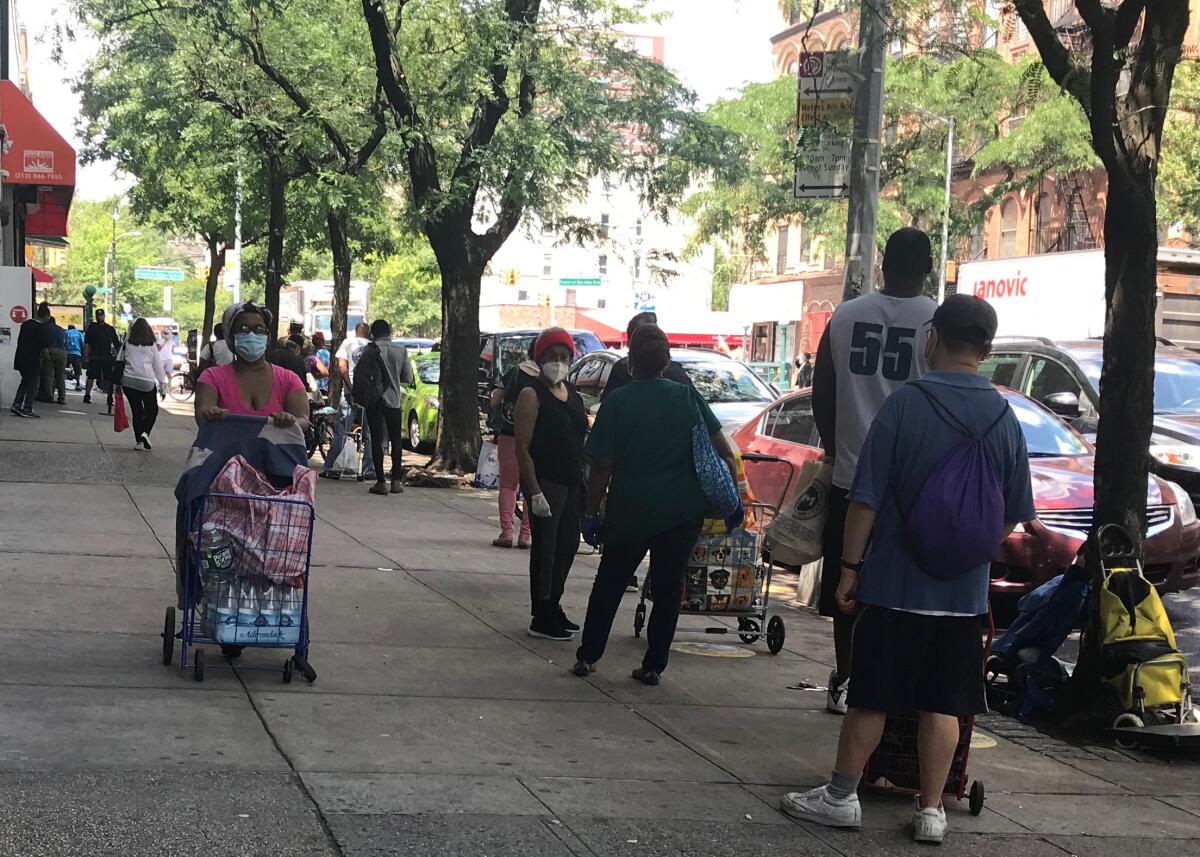
- Share via
NEW YORK — The hip-hop-themed restaurant Beatstro once featured chandeliers and graffiti art, DJ-led brunches, dancing and cuisine fused with Latin and African American traditions.
Now, amid the economic devastation of the COVID-19 pandemic, the dining room remains dark while employees and volunteers operate from the sidewalk, handing out free meals and boxes of fruit and vegetables.
“This helps me to live,” said Nereida Delgado, 37, who was among dozens of South Bronx residents lined up for food on a recent weekday morning.
Delgado, who lives nearby in public housing and receives disability assistance, said she cannot afford to feed her three children, who used to get some meals at school but have been home full time since New York went into lockdown in March.
The restaurant’s relief operation is part of a massive mobilization by the city government, charities, restaurants and ordinary residents to feed the hungry, whose ranks have swelled since the economy there effectively shut down.
City officials estimate 2 million New Yorkers — about 1 in 4 — are currently food insecure, meaning they do not have consistent access to enough food to live an active, healthy life. That figure is up from 1.2 million before the pandemic.
The city’s unemployment rate jumped from 3.4% in February to 18.3% in May, leaving many New Yorkers in financial difficulty and reliant on food aid.
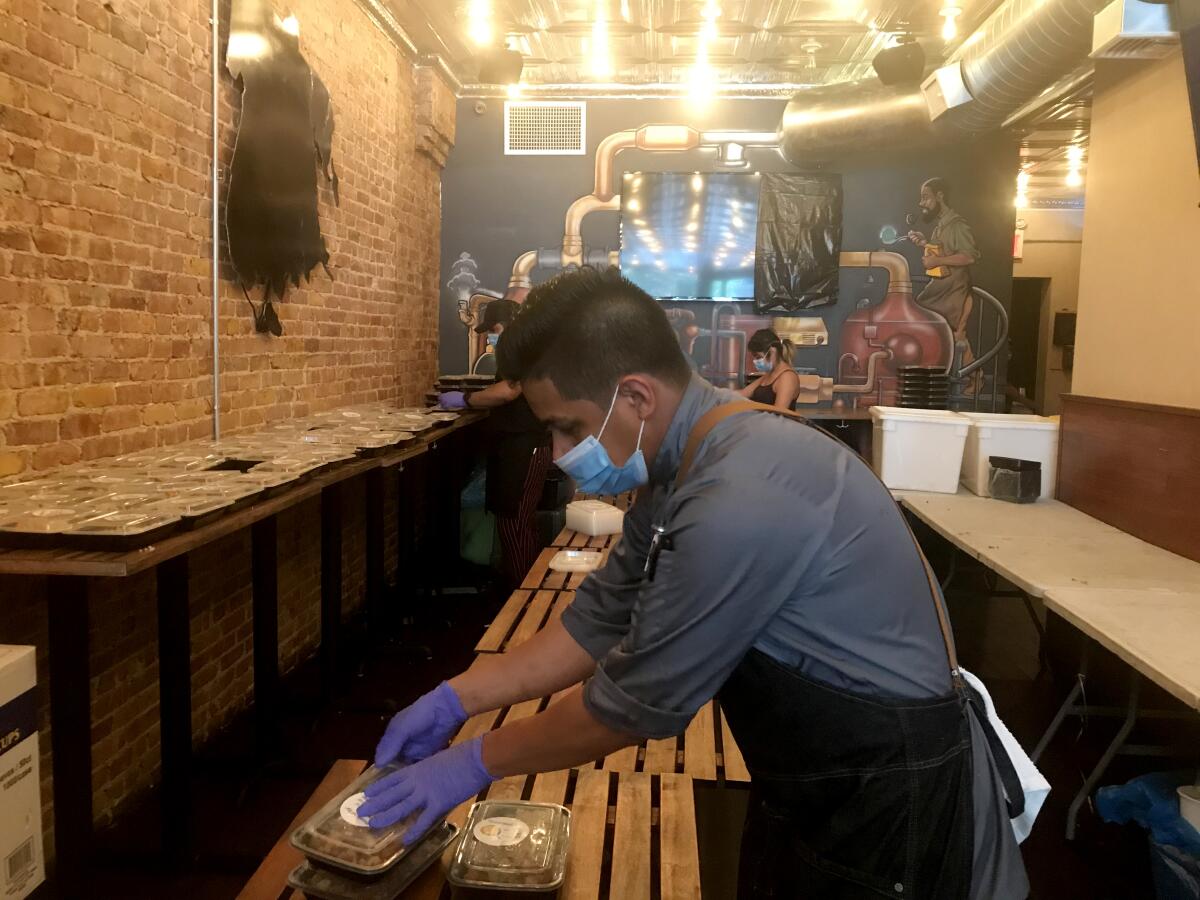
Poor neighborhoods such as Mott Haven, where Beatstro is located, have suffered most. The restaurant’s owner, Alfredo Anguiera, noted that residents were already disadvantaged when it came to education, employment and food access.
The added pressures caused by the pandemic are “a recipe for disaster,” he said.
Months after coronavirus deaths peaked across the city, food lines remain a common site.
In the Bedford-Stuyvesant neighborhood of Brooklyn, people lined up along Myrtle Avenue for free food being distributed at the Greater St. Stephen United Church of God.
Two blocks away, hundreds of people picked up produce and staples at a pop-up food pantry set up in a handball court at a public housing complex by City Harvest, a nonprofit that reclaims unused food from stores, restaurants and farms and gives it to the needy.
“Those lines were long at the beginning [of the pandemic],” said City Harvest CEO Jilly Stephens. “They stayed long and have grown. We have so many stories of people who have never relied on emergency food before, who had steady jobs before.”
To help address the problem, Mayor Bill de Blasio took the unprecedented step in April of naming a “food czar” to coordinate the city government’s emergency food aid response during the pandemic.
The job went to Kathryn Garcia, who is also the sanitation commissioner. She said her biggest challenge has been getting enough food to meet a “tremendous need.”
One moment of panic came when Pennsylvania briefly closed highway rest stops, jeopardizing truck shipments of food. More challenges arose when special food accommodations needed to be made for people celebrating Passover and Ramadan.
The city distributes up to a million meals a day — handing them out at schools or paying taxi and ride-share drivers to deliver them — and has spent approximately $450 million on food aid since the pandemic hit, Garcia said.
Nonprofits are also helping. The Rev. Al Sharpton’s National Action Network office in Harlem gives out free lunches. Every Monday, a parking lot at the Brooklyn Museum, closed because of the pandemic, becomes a pop-up food pantry organized by the Campaign Against Hunger.
When the lockdown forced the Episcopal Actors’ Guild to shut its food pantry for performers because of social distancing concerns, the group organized online grocery deliveries for actors in need and also arranged gift cards so people could buy their own food.
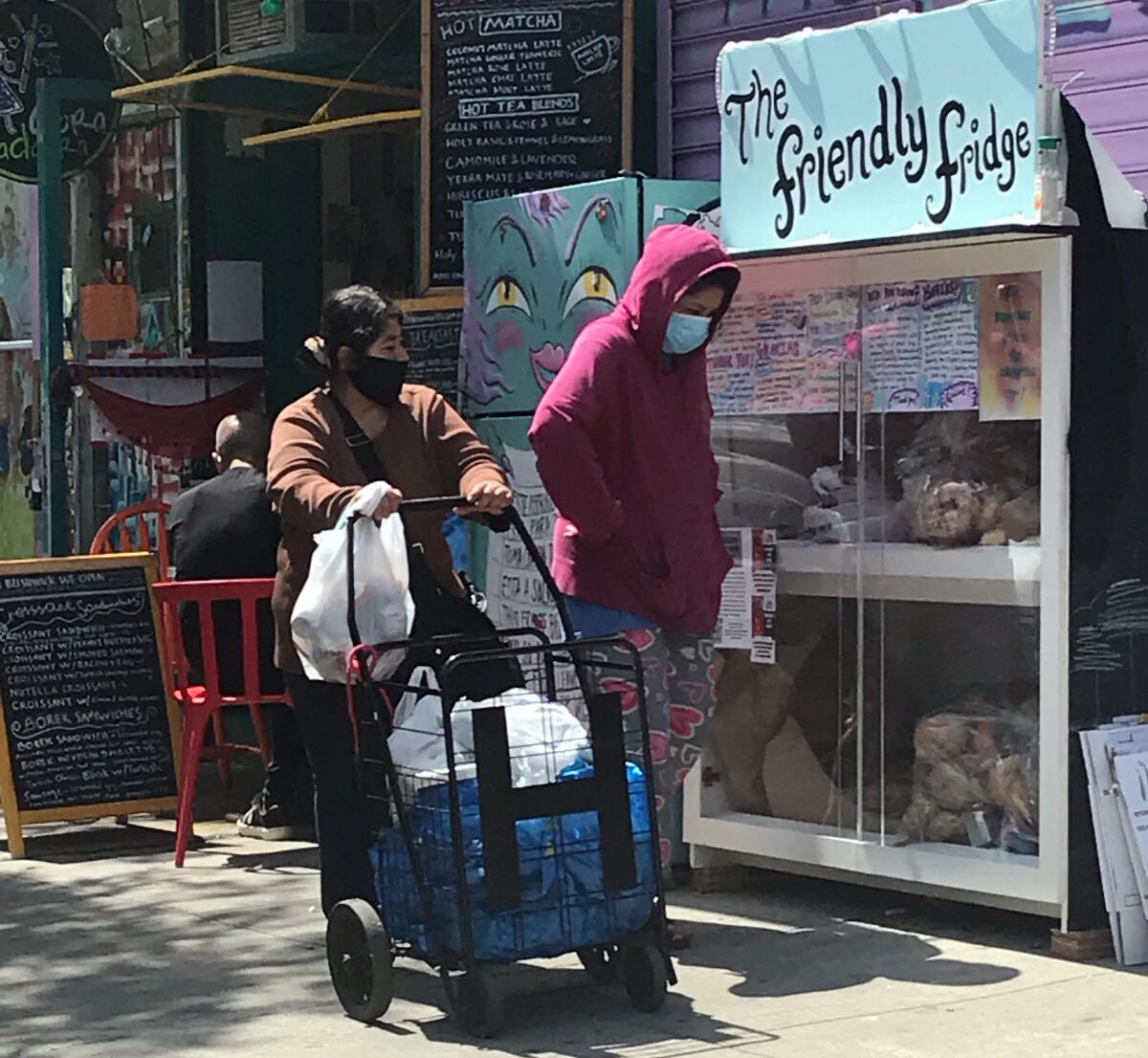
In the Bushwick neighborhood of Brooklyn, artist Pam Tietze, 36, set up a “friendly fridge” on a sidewalk where people could leave food or take it. She painted the fridge, which was donated after she posted a request on Craigslist, in bright, whimsical designs and created an Instagram account.
“Every day the fridge is filled and every day it is emptied,” Tietze said. The project spawned numerous other “friendly fridges” around the city.
The food pantry run by the hunger relief organization La Jornada — in Flushing, Queens — started as an aid group for day laborers but expanded its clientele and now serves about 5,000 people each Saturday. Recipients register online for appointments.
The group’s executive director, Pedro Rodriguez, said some of his volunteers work 16-hour shifts to meet the demand and avoid having to turn people away.
On the first Saturday in March after the lockdown was imposed, Rodriguez was expecting about 1,000 people to show up. But when he opened the doors, a police officer told him the line for food stretched 27 blocks.
“To tell thousands of people you don’t have food,” Rodriquez said, “it’s horrible.”
Haller is a special correspondent.
More to Read
Sign up for Essential California
The most important California stories and recommendations in your inbox every morning.
You may occasionally receive promotional content from the Los Angeles Times.
